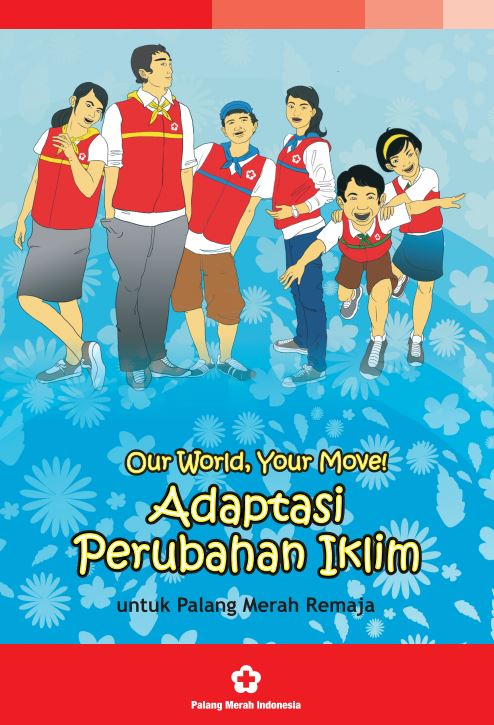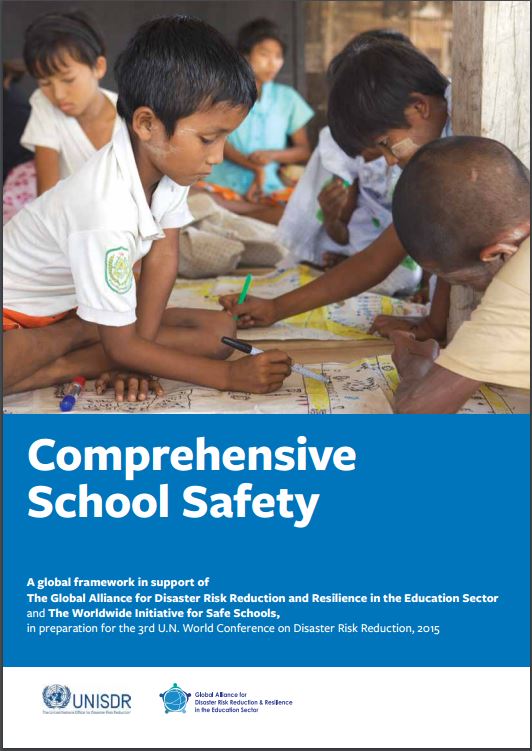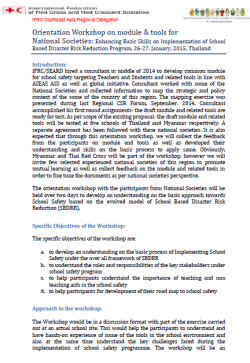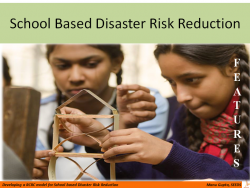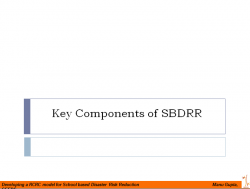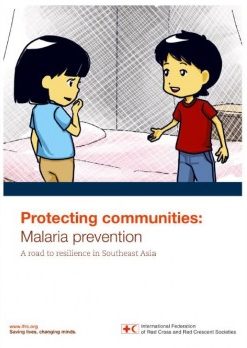Purpose: The expected outcome of the workshop was that the participants have a clear picture of how to implement the SBDRR project and which stakeholder should be involved, also the important role of RCRC to work with school. The objectives of the workshop were:
- to develop an understanding on the basic process of Implementing School Based Disaster Risk Reduction,
- to understand the roles and responsibilities of the key stakeholders under school safety program,
- to help participants understand the importance of teaching and non-teaching aids in the school safety and
- to help participants develop their road map to school safety.
Overview: IFRC organized the Orientation Workshop on module & tools for National Societies: Enhancing Basic Skills on Implementation of School Based Disaster Risk Reduction Program on 26-27 January 2015 in Ubon Ratchathani, Thailand. The workshop was conducted in a discussion format with a simulation (part of the exercise carried out in an actual school site), so that participants gained hands-on experience of some of the tools in the school environment and understand the key challenges faced during the implementation of school safety programme.
Usage: Training
Audience: Technical staff, Communication staff
For related documents, click here: Agenda, Concept Note
3. Group Work – Understanding day to day risks and its impact during emergency: The expected outcomes are:
- Participants understand impacts of the disasters on school children and need for DRR and
- Participants are able to enumerate risks faced by children due to hazards.
4. RCRC Model of Schoolbased Disaster Risk Reduction. The expected outcomes are:
- Participants develop understanding and clarity on the evolved model on SBDRR which is inclusive of 3 pillars
- Participants are able to relate to SBDRR program within their given context
5. Key Components of School Based Disaster Risk Reduction. The expected outcome is: clarity on methodology, approach and key activities to be performed
6. Orientation on Structure and Non-Structure Elements. The expected outcome is: Basic understanding and clarity on structure and non-structural elements
7. Task Forces – Roles and Responsibilities, Guidelines and SOP Group Exercise. The expected outcome is: Participants are able to identify the need for task forces, criteria for selection and their roles and responsibilities
8. School Disaster Management Plan (SDMP):
- School DM Plan Template
- Identification of roles and responsibilities of stakeholders
- Importance of HVCR
- Education in emergency
- Management of schools as relief centers
The expected outcomes are:
- Participants will be able to identify the key stake holders and their roles and responsibilities
- Develop skill to prepare SDMP
- Holistic planning of SDMP
![]()



